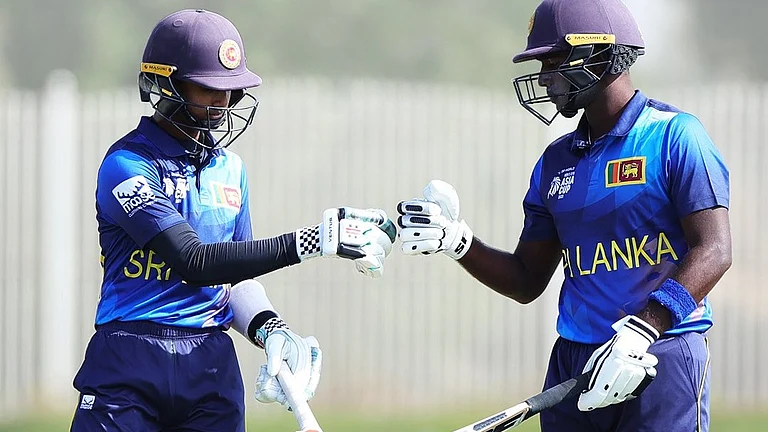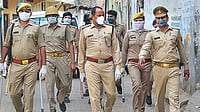If you still think Potato Chips is comfort food for overweight teens, it’s obviously been a while since you legged it to a bookstore. Because there, sitting neatly on a shelf, you will find it—the latest addition to a rising pile of books penned by teenagers and snapped up by publishers to fill the gap between Enid Blyton and Sidney Sheldon.
But before you bookmark it as kiddie fiction, Anshuman Mohan, the articulate 15-year-old writer of Potato Chips (completed when he was 13, and published by HarperCollins this year), will have you know that he, for one, “would rather not publish my book than have it stacked in the kids’ section alone. I see it this way: my book is written by a kid to an adult”. His ambition is shared by most young storytellers, including Shival Gupta, who has felt published-author goosebumps twice over with Discovery of the Swordcase, a fantasy novel, and “romantic comedy” Where Edges Meet, out in 2009. “I don’t want to connect only with teenagers,” asserts the 12th-grader, whose tryst with novel-writing has been cut short by IIT-JEE preparations in Kota.

Anirudh Vasdev, 19
College Hans Raj College, Delhi
Book Ghosts, Wizards and Other Fantasies, published by Sterling, 2009
Theme Fantasy fiction
Textbooks have also slowed down Anirudh Vasdev, a second-year student of English literature, currently working on his second collection of short stories to follow his first, Of Ghosts, Wizards and Other Fantasies. Published by Sterling, the book got a dream launch at the London Book Fair last year. “I remember skipping classes to write in the library, wondering whether anyone would ever read me. And then, there I was, signing books for readers of all ages!” he beams.
As more teen writers script success stories, some of India’s best-loved children’s authors feel it could open a new chapter for the genre. Says Ruskin Bond, who indulgently reads poems, novellas and everything in between brought to him by his little fans: “In the last five years, there has been a sudden upsurge in children who want to write. Earlier, it was just the school magazine, and a handful of students would take up writing later. Now, everyone wants to be published! Maybe there is a certain glamour about it now, with writers gaining prominence in the visual media.” Adds children’s author Subhadra Sengupta, also one of the organisers of children’s litfest Bookaroo that took off in 2008, “Nowadays, children’s books are selling very well and publishers have woken up to this huge untapped market. Ten years ago, most publishing houses didn’t even have a children’s editor. The scenario’s different now.”

Trisha Ray, 18
College Jadavpur University, Calcutta
Book The Girls Behind the Gunfire, to be published by HarperCollins, 2011
Theme Action-adventure thriller
While the publishing industry hasn’t quite turned over a new leaf yet, all of this may be incentive enough for children to type out that formidable first sentence. But where does the gumption to actually send drafts to potential publishers, instead of tucking them away into some chaotic desk drawer, come from? Pradipta Sarkar of HarperCollins, who worked with two teen writers (Anshuman and Trisha Ray) for the house’s Young Adult range, offers: “Youngsters these days are surer of themselves, tech-savvy, net-savvy, world-savvy. They also have diverse and exciting lives, and much more to say than, say, a teen 15 years ago.”
Sudeshna Shome Ghosh, editorial director, Puffin, adds parental encouragement to the mix. Puffin, which published Adventures in Antarctica by the teen brother-sister duo of Rishi and Suravi Thomas in 2007, will, in November, add 17-year-old mountaineer Arjun Vajpayee’s name to the list of young authors.

Ronen Chatterjee, 18
College IIPM, Delhi
Books Fire Within and Ready to Rock published by Har-Anand Publications, 2007 and 2009 respectively
Theme Inspirational, coming-of-age tales
Arjun’s account of scaling Mt Everest will be an adventure tale, as real as it gets, to be rivalled only by action as it unfolds in the imagination. Which, along with fantasy (the Harry Potter effect?), is a recurring theme in manuscripts from teens and tweens, say publishers. The other clear winner is a wholesome school tale, liberally garnished with pranks and punishment, and sometimes, budding romances. Ronen Chatterjee’s second novel Ready to Rock, for instance, is set in Sherwood College, Nainital. As Bond explains, “At 12 or 14, you either write about yourself or let imagination run riot. But you do not necessarily connect better with readers your own age, who’d sometimes prefer to read a writer who’s seen more of the world and has more to offer.”

Anshuman Mohan, 15
School St Xavier's, Calcutta
Book Potato Chips, published by HarperCollins, 2010
Theme School life and adolescence
What they may lack in range of experience, these pen-wielding adolescents make up for in contexts, situations and lingo. So the political unrest over Nandigram and Nano crops up in the Calcutta-based Anshuman’s book, while schoolspeak like panga, murga and pehnao topi is sprinkled in others. Virtual conversations via email and chats also do a lot of the talking. Sample this from Potato Chips:
From: rohan.hunk.soccer@yahoo.com
To: aman.007@gmail.com
Subject: Hi
Hi, dude, wassup? I’m chilling. US is kewl! Life here rox. Heat in cal sux. Tell you more l8r. C u soon.

Asmita Goyanka, 15
School Montfort School, Delhi
Book The Mystic Temple, published by Roli Books, 2008
Theme Fantasy adventure with five girls as protagonists
“The idea is the beginning,” feels Sengupta, after which it is all the way uphill to build the plot and characters. At 15, Asmita Goyanka, who began jotting down Mystic Temple as a 10-year-old, knows that already. Now playing critic to her 11-year-old brother’s literary pursuits, she explains her choice of books: “The reason I prefer the Twilight series is that the characters are better etched out, as opposed to Harry Potter, which is more descriptive. A good story is more than events, right?” Another 15-year-old, Rohini Roy, is grappling with that perfect last line to conclude her tribute to her late father, who passed away last year.
What the newbies on the block readily acknowledge is that changes suggested by editors work well, and no, there isn’t any bullying. But if they expect their baby fat to see them through loose writing, they have another think coming. Himanjali Sankar, editor of Scholastic India that brings out an annual compendium of pieces by budding authors called For Kids By Kids, states, “The same stringent standards of quality, style and language that we expect from adult authors are expected from younger ones.” By the same logic, as Dibakar Ghosh, senior commissioning editor, Penguin Books India, reveals, the royalty arrangement with Rohini “is on par with other first-time authors”. Trisha Ray, who keyed in 85,000 words for her “kickass action thriller” The Girls Behind the Gunfire, too is happy with her “incredibly generous advance”. A karate kid herself (she earned a black belt in school), Trisha’s protagonists will be dorky girls who can fire a mean shot and land a clean kick where it counts. Heck, they aim right. Much like our fledgling writers themselves.


























